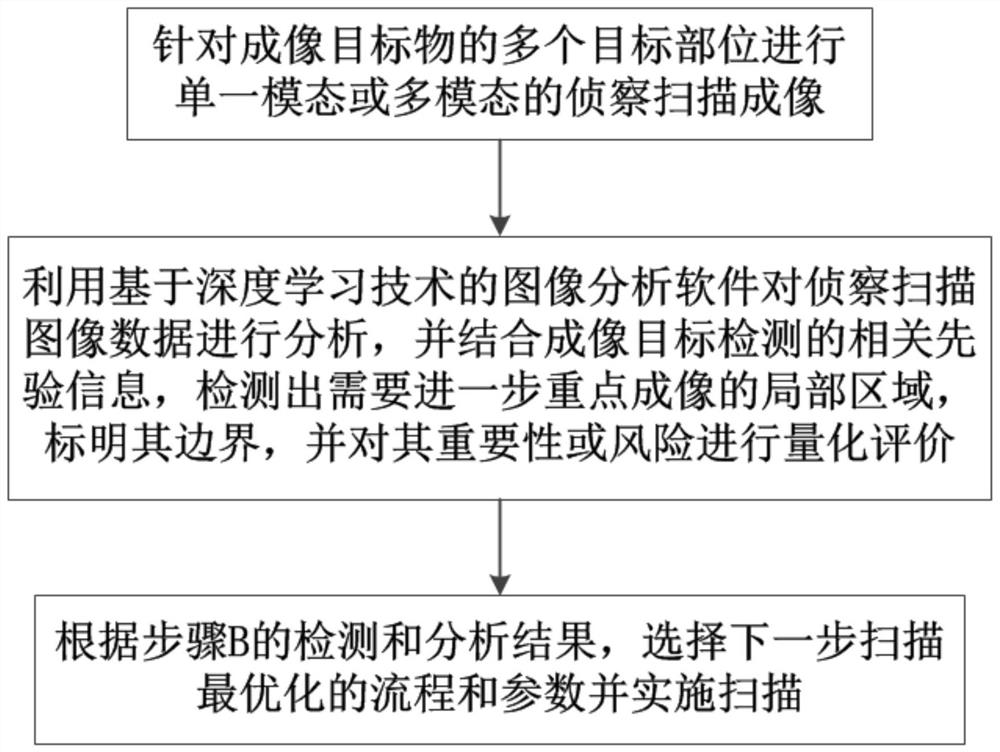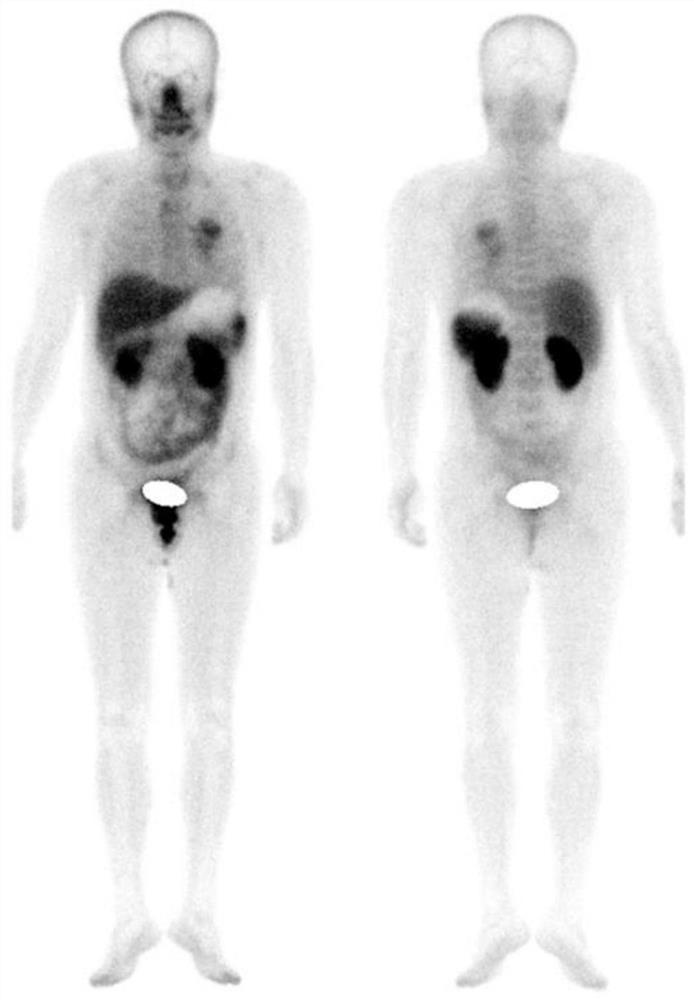An adaptive multi-part scanning imaging method and system based on deep learning
A technology of deep learning and scanning imaging, applied in the field of nuclear medicine imaging, can solve problems such as complex optimization, difficult to really play a role, difficult to quantify standards, etc.
- Summary
- Abstract
- Description
- Claims
- Application Information
AI Technical Summary
Problems solved by technology
Method used
Image
Examples
Embodiment 1
[0051] The adaptive multi-part scanning imaging method based on deep learning in this embodiment is applied to multi-modal imaging equipment mainly based on nuclear medicine, such as figure 1 shown, including the following steps:
[0052] Step A, performing single-modal or multi-modal reconnaissance scanning imaging for multiple target parts of the imaging target;
[0053] Step B, using the image analysis software based on deep learning technology to analyze the reconnaissance scanning image data in step A, and combining the relevant prior information of imaging target detection, detecting the local area that needs to be further focused on imaging, marking its boundary, and Quantitative evaluation of its importance or risk;
[0054] Step C, according to the detection and analysis results of step B, select the process and parameters to be optimized for the next scan and implement the scan.
[0055] Preferably, the nuclear medicine-based multimodal imaging equipment is a SPECT...
Embodiment 2
[0073] The adaptive multi-part scanning imaging system based on deep learning in this embodiment is applied to multi-modal imaging equipment mainly based on nuclear medicine, and the multi-modal imaging equipment based on nuclear medicine is embedded with technology based on deep learning. image analysis software, and the adaptive multi-part scanning imaging system based on deep learning includes the following modules:
[0074] The reconnaissance scanning imaging module is used to perform single-modal or multi-modal reconnaissance scanning imaging for multiple target parts of the imaging target;
[0075] The quantitative evaluation module is used to analyze the reconnaissance scan image data generated by the reconnaissance scan imaging module by using image analysis software based on deep learning technology, and combine the relevant prior information of imaging target detection to detect local areas that need further key imaging, Mark its boundaries and quantify its importanc...
PUM
 Login to View More
Login to View More Abstract
Description
Claims
Application Information
 Login to View More
Login to View More - R&D
- Intellectual Property
- Life Sciences
- Materials
- Tech Scout
- Unparalleled Data Quality
- Higher Quality Content
- 60% Fewer Hallucinations
Browse by: Latest US Patents, China's latest patents, Technical Efficacy Thesaurus, Application Domain, Technology Topic, Popular Technical Reports.
© 2025 PatSnap. All rights reserved.Legal|Privacy policy|Modern Slavery Act Transparency Statement|Sitemap|About US| Contact US: help@patsnap.com



